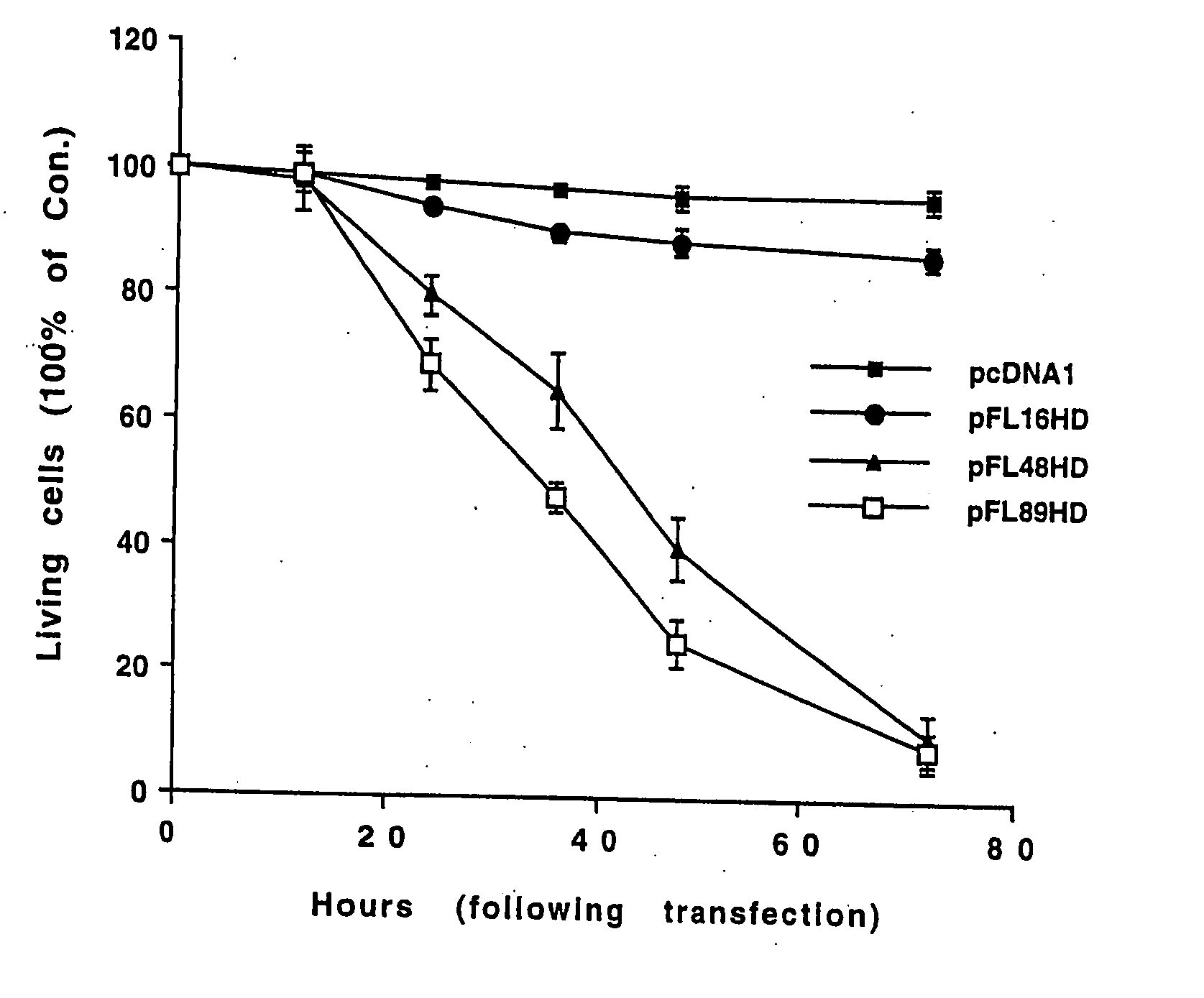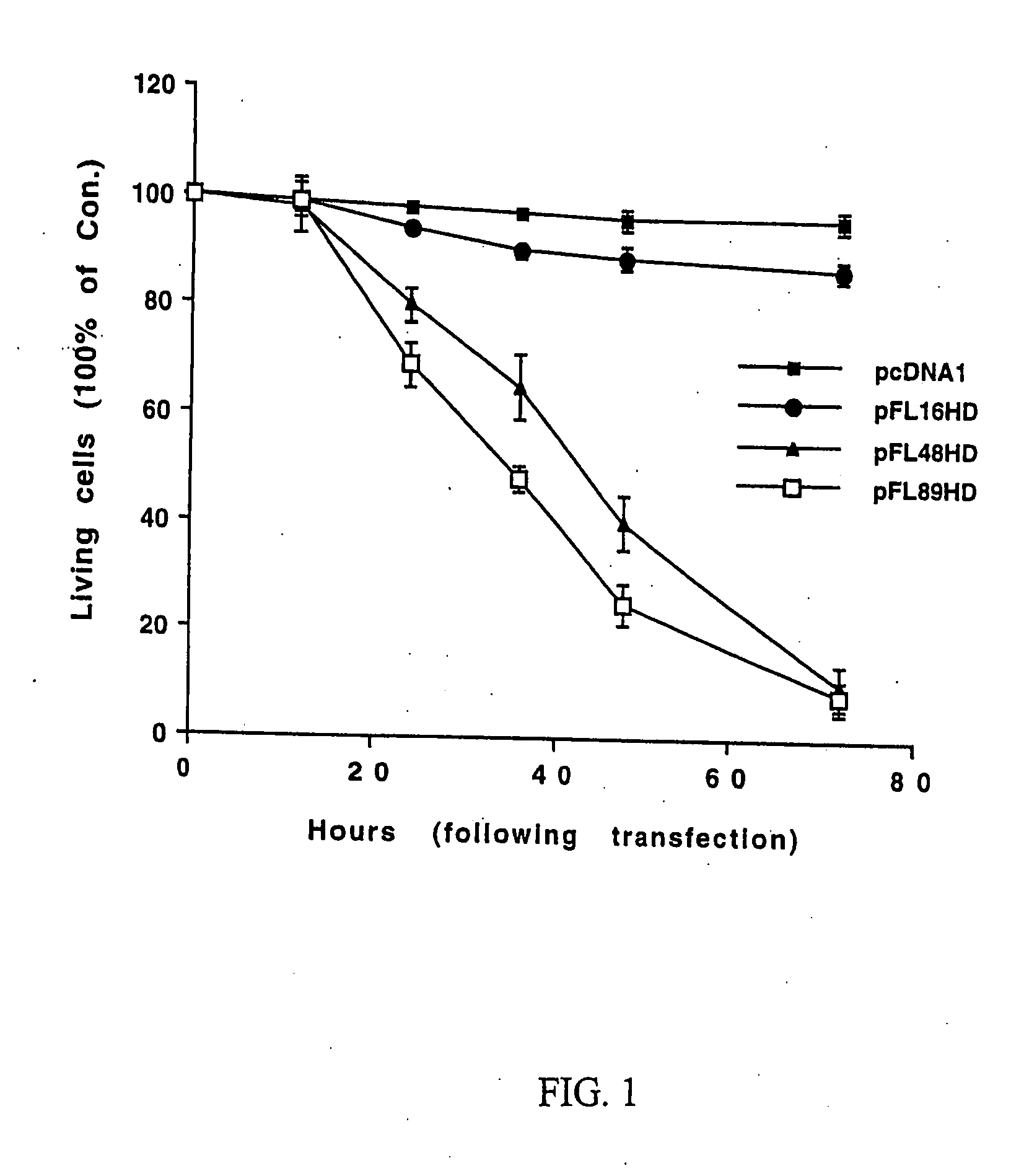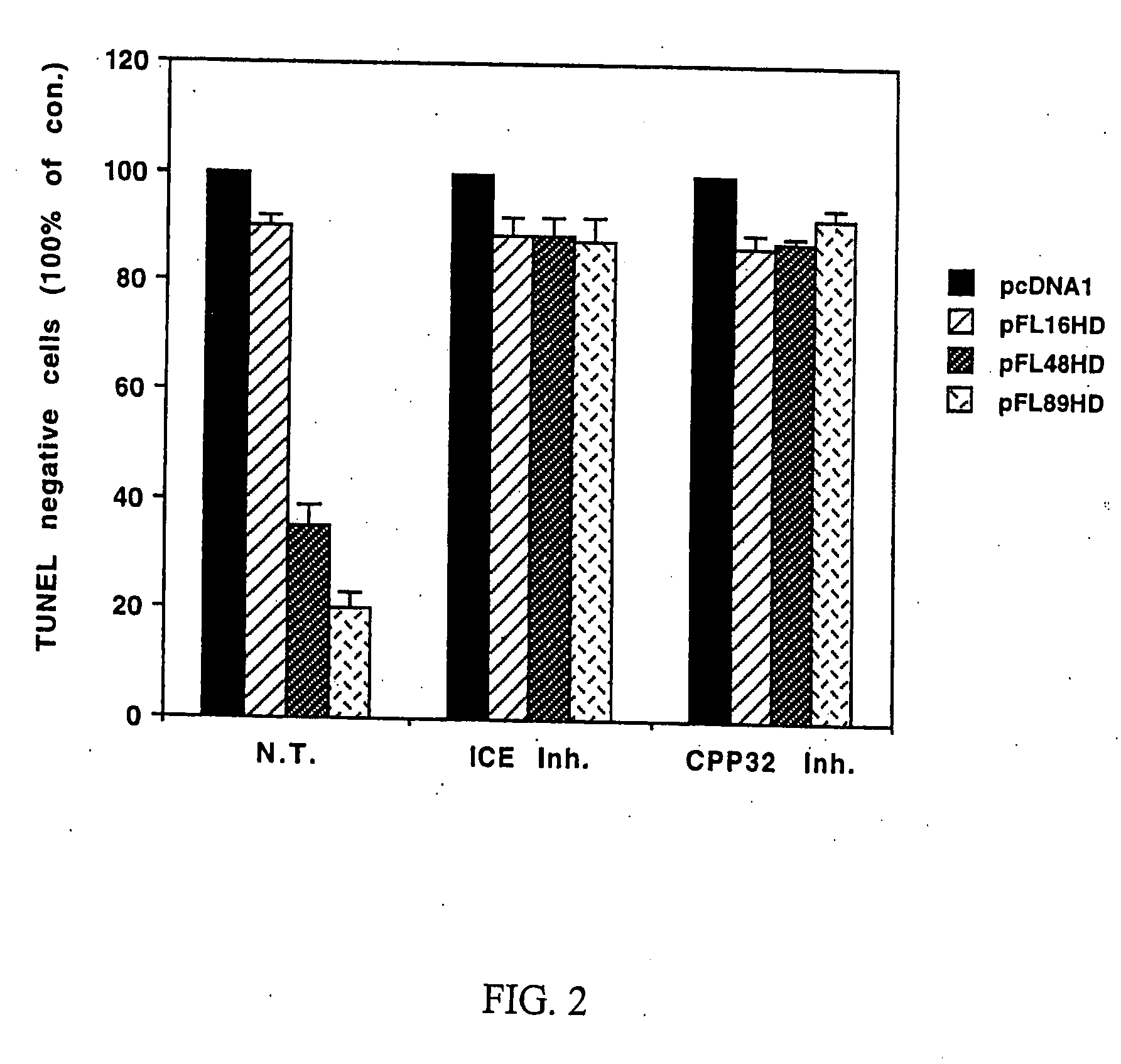Method for identifying JNK and MLK inhibitors for treatment of neurological conditions
a neurodegenerative condition and inhibitory technology, applied in the field of neurodegenerative conditions, can solve the problems of no clinically available pharmaceutical tool to date for blocking excitotoxicity and preventing, no neurodegenerative disease treatment plan is developed, and no clinically available drug tool to date is employed to block excitotoxicity and prevent, etc., to achieve the effect of inhibiting jnk and/or mlk, preventing neuronal loss, and reducing the inhibitory effect of ml
- Summary
- Abstract
- Description
- Claims
- Application Information
AI Technical Summary
Benefits of technology
Problems solved by technology
Method used
Image
Examples
example 1
Developing a Model for Neurodegeneration Based on Huntingtin Expression
[0068] To develop a cell-based system in which apoptosis can be induced, polyglutamine-expanded huntingtin was introduced into cell lines.
[0069] To assess whether polyglutamine-expanded huntingtin causes toxicity, full-length huntingtin expression constructs containing 16, 48 or 89 CAG repeats were generated by assembly of a combination of RT-PCR products from normal and human HD lymphoblast and plasmid cDNA clones IT16L and IT15B, which are described in HD Collaborative Research Group, Cell 72:971-983 (1993).
[0070] To construct the huntingtin expression vector with 16, 48, or 89 CAG repeats, the first third of the full-length construct was derived by ligation of IT16L (bp 932-3 018) with three different PCR products (bp 2401-3270, bp 637-1429 and 187-858). A3027 bp cDNA fragment was removed from the resulting construct and ligated to corresponding sites in the cDNA clones IT15B (bp3024-10366). The CAG repeat ...
example 2
Role of JNK in Neuronal Apoptosis
[0077] Whether expression of polyglutamine-expanded huntingtin induces activation of JNK was investigated. GST c-Jun (1-89 aa) was utilized as a substrate to measure JNK activity in cell lysates from HN33 cells transfected with pcDNA1 (control), pFL16HD, pFL48HD or pFL89HD.
[0078] HN33 cells were lysed with 1% Triton buffer 16 hours after transfection. Cell lysates were incubated with glutatione-S-transferase (GST)-c-jun (1-89) fusion protein immobilized on glutatione sepharose beads to isolate JNK. These beads were resuspended in 30 μL kinase buffer. The kinase reaction was performed at 30° C. for 30 minutes and then stopped by adding SDS sample buffer to the reaction. The reaction was analyzed by Western blotting using a phospho (ser63)-specific c-jun antibody (New England BioLabs).
[0079] A low level of JNK activation was observed in control cells. Transfection of a plasmid encoding normal huntingtin with 16 CAG repeats did not further increase t...
example 3
Role of MLK in Neuronal Apoptosis
[0090] A kinase dead version of MLK2 was generated by introduction of A-G point mutation at position 651 (codon AGG to GAG) by overlapping extension using polymerase chain reaction with mutated oligonucleotides, to result in amino acid substitution of K to E in the ATP binding loop of the MLK2 kinase domain. Such a point mutation leads to total loss of kinase activity of MLK2 and a kinase dead version of MLK2 will act as a dominant mutant and inhibit MLK2 activation-mediated actions. Tibbles, L. A., et al., EMBO. J, 15:7026-7036 (1996). The cDNA fragment of wild-type or kinase dead MLK2 was inserted into pRK5CMV with a C-terminal myc tag. Nagata, K., et al., EMBO. J, 17:149-158 (1998).
[0091] To examine whether expression of MLK2 induces neuronal cell death, HN33 cells were transfected with pRK5CMV, wild-type or kinase dead MLK2 expression vector using lipofectin (Boehringer Mannheim) according to manufacture instruction. Forty-eight hours after tra...
PUM
| Property | Measurement | Unit |
|---|---|---|
| concentration | aaaaa | aaaaa |
| temperature | aaaaa | aaaaa |
| pH | aaaaa | aaaaa |
Abstract
Description
Claims
Application Information
 Login to View More
Login to View More - R&D Engineer
- R&D Manager
- IP Professional
- Industry Leading Data Capabilities
- Powerful AI technology
- Patent DNA Extraction
Browse by: Latest US Patents, China's latest patents, Technical Efficacy Thesaurus, Application Domain, Technology Topic, Popular Technical Reports.
© 2024 PatSnap. All rights reserved.Legal|Privacy policy|Modern Slavery Act Transparency Statement|Sitemap|About US| Contact US: help@patsnap.com










